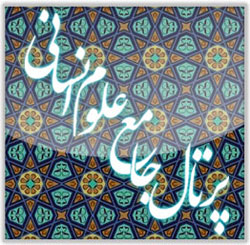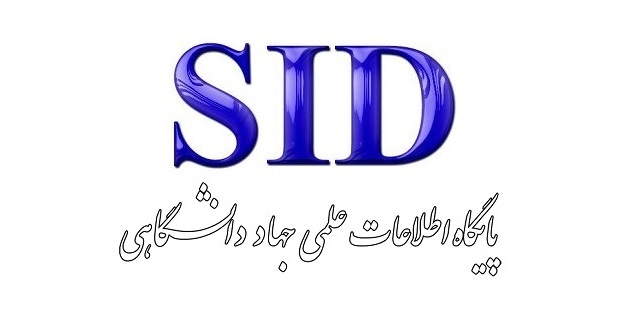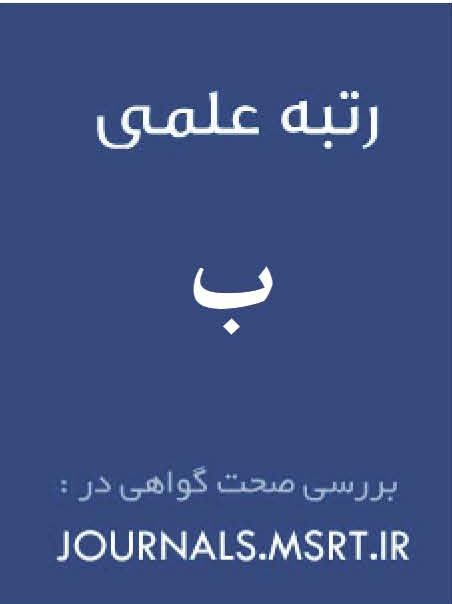معناشناسی تاریخی واژگان مهر در قرآن
کلمات کلیدی:
معنا شناسی تاریخی, مهر, قرآنچکیده
با عنایت به قدمت واژه مهر، مطالعه حاضر با هدف پاسخگویی به این پرسش کلیدی سامان میپذیرد که: واژه ی«مهر» از نظر تاریخ در فرهنگ عرب پیش از اسلام دارای چه مؤلفههای معنایی بوده است که قرآن کریم از کاربرد آن صرف نظر کرده و چهار واژه جدید را برای اشاره به مفهوم مهریه به کار گرفته است؟ برای پاسخ به این پرسش، از ظرفیت دانش معناشناسی تاریخی سود جسته شده، تا از این طریق ابعاد مختلف واژه مهر از حیث مؤلفههای معنایی روشنتر شود و آگاهیها از این گردش واژگانی افزونتر گردد. معناشناسی تاریخی روشی است که تحولات معنایی یک واژه را در گذر زمان مورد مطالعه قرار میدهد. نخست ضروری است قدیمیترین ریشههای آن واژه در قالب یک مطالعه تطبیقی با زبانهای خویشاوند بازشناخت و سپس مرحله به مرحله، تحولات معنایی آن در طول تاریخ به بحث گذارده شود. به این ترتیب با اتخاذ رویکرد معناشناسی تاریخی میتوان دریافت که آن واژه در بستر فرهنگی عرب پیش از اسلام در بردارنده چه مؤلفههای معنایی بوده است. در این مقاله سابقه ماده «م ه ر» در زبان عربی مورد تجزیه و تحلیل قرار گرفته و با بهره جستن از معناشناسی تاریخی، تبار این ماده و ریشههای تاریخی آن بازشناخته و مورد مطالعه قرار گرفته شد.
دانلودها
مراجع
Ansari, M. i. M. A. (1990). Al-Makasib (The Earnings). Dar al-Dhakhair.
Anvari, H. (2003). Farhang-e Bozorg-e Sokhan (The Great Dictionary of Sokhan). Sokhan Publications.
Barru, T. (1996). Tarikh al-Arab al-Qadim (Ancient History of the Arabs). Dar al-Fikr al-Mu'asir.
Biella, J. C. (1982). Dictionary of Old South Arabic: Sabaean dialect. Scholars Press. https://doi.org/10.1163/9789004369993
Black, J. A. (2000). Concise dictionary of Akkadian. Harrassowitz Verlag.
Bolouk Bashi, A. (2006). Da'irat al-Ma'arif-e Bozorg-e Eslami (Great Islamic Encyclopedia). Center for the Great Islamic Encyclopedia.
Brun, S. (1895). Dictionarium Syriaco-Latinum. Typographia PP. Soc. Jesu.
Bussmann, H. (2006). Routledge dictionary of language and linguistics. Routledge. https://doi.org/10.4324/9780203980057
Clauson, G. (1972). An etymological Turkish dictionary. Clarendon Press.
Dalou, B. a.-D. (1989). Jazirat al-Arab Qabl al-Islam (The Arabian Peninsula before Islam). Dar al-Farabi.
Dehkhoda, A. A. (1998). Loghatnameh-ye Dehkhoda (Dehkhoda Dictionary). University of Tehran Press.
Farahidi, K. i. A. (1988). Al-Ayn (The Eye). Mu'assasat Ilmiyyah Matbou'at.
Fayoumi, A. Al-Misbah al-Munir (The Luminous Lamp). Dar al-Razi.
Firouzabadi, M. (2005). Al-Qamus al-Muhit (The Surrounding Dictionary). Mu'assasat al-Risalah.
Gesenius, W. (1939). A Hebrew and English lexicon of the Old Testament. Clarendon Press.
Herskovits, M. (1952). Economic anthropology: A study in comparative economics. Alfred A. Knopf.
Ibn Durayd, M. i. H. (1987). Jamharat al-Lughah (The Compendium of Language). Dar al-Ilm lil-Malayin.
Ibn Faris, A. (1979). Maqayis al-Lughah (Standards of Language). Dar al-Fikr.
Ibn Manzur, J. a.-D. (1993). Lisan al-Arab (The Tongue of the Arabs). Dar al-Fikr.
Jastrow, M. (1903). A dictionary of the Targumim. G. P. Putnam's Sons.
Khoei, A. Misbah al-Fiqahah.
Khomeini, R. (2006). Al-Rasa'il (The Treatises). Isma'iliyan Publications.
Lévi-Strauss, C. (1969). The elementary structures of kinship. Beacon Press.
Ma'louf, L. (2004). Al-Munjid fi al-Lughah (The Munjid in Language). Dar al-Ilal Publications.
Makarim Shirazi, N. (2001). Tafsir-e Nemouneh (The Exemplary Exegesis). Dar al-Kutub al-Islamiya.
Meshkini, A. (2013). Tafsir-e Quran-e Karim (Exegesis of the Holy Quran). The Great Quran Printing House.
Mixco, M. (2007). A glossary of historical linguistics. Edinburgh University Press.
Pakatchi, A. (2008). An Introduction to Contemporary Semantic Schools. Farhangi Research, 9(35).
Post, G. (1981). Fahras al-Kitab al-Muqaddas (Index of the Holy Bible). Maktabat al-Mash'al.
Qara'ati, M. (2004). Tafsir-e Nour (The Exegesis of Light). Lessons from the Quran Cultural Center.
Raghib Isfahani, H. (1991). Al-Mufradat fi Gharib al-Quran (The Singularities in the Strange Words of the Quran). Dar al-Ilm.
Sadeghi, M. (2010). Ahwal-e Shakhsiye-ye Ahl-e Sunnat (Personal Status of the Ahl al-Sunnah). Kharsandi.
Sanmartín, J. (2003). Dictionary of the Ugaritic language in the alphabetic tradition. Brill.
Shahidi, A. (2019). Problems of a Lack of Complete Information in the Economy. Donya-ye Eghtesad (World of Economy)(47).
Shams al-Din, M. (2002). Al-Muttali' 'ala Alfaz al-Muqni' (The Observer of the Words of Al-Muqni'). Maktabat al-Sawadi.
Stolbova, O. (1995). Hamito-Semitic etymological dictionary. Brill.
Tabibian, H. (1988). Farhang-e Larousse (Larousse Dictionary). Amir Kabir.
Tabrizi, M. H. (1963). Borhan-e Qate' (The Decisive Proof). Ibn Sina.
Tohidi, M. A. (1991). Misbah al-Fiqahah (The Lamp of Jurisprudence). Ansarian Institute.
Wolfenson, I. (1929). Tarikh al-Lughat al-Samiyyah (History of the Semitic Languages). Dar al-Qalam.
Zamakhshari. (1986). Al-Kashshaf 'an Haqa'iq al-Tanzil (The Unveiling of the Realities of Revelation). Dar al-Kitab al-Arabi.
دانلود
چاپ شده
ارسال
بازنگری
پذیرش
شماره
نوع مقاله
مجوز
حق نشر 2025 Fatemeh Fathi, Soheila Parastegari, Majed Najjarian (Author)

این پروژه تحت مجوز بین المللی Creative Commons Attribution-NonCommercial 4.0 می باشد.







